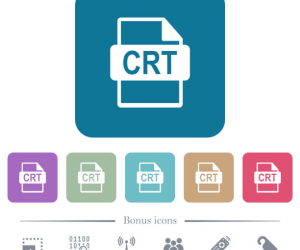Tax season can be an overwhelming experience for many individuals and businesses alike. Ensuring efficient tax preparation can ease the anxiety associated with tax season, improving accuracy, reducing stress, and potentially maximizing refunds or minimizing payment obligations. In this blog, we will discuss the five key steps to efficient tax preparation.

Step 1: Gather and Organize Your Documentation
Before embarking on your tax preparation journey, it’s crucial to gather and organize all relevant documents. This will simplify the process, ensuring accuracy and efficiency.
Important Tax Documents
Publications, books and easy-to-read guides can serve as your handbook throughout this often complex process. W-2s, 1099s, receipts, invoices, previous tax returns, mortgage statements and education expenses are among some of the most important tax documents.
Step 2: Understand Tax Law Changes
Tax law changes are common, particularly when new administrations enter office. Staying abreast of these developments can have considerable ramifications on your tax filings.
Keep Yourself Updated
Subscribing to blogs, newsletters, and publications from reputable tax and finance platforms can help you stay updated on tax law changes. Following the IRS and state taxing agency websites can also provide valuable insights.
In the fourth paragraph, we dive deeper into the role of professional tax preparation outsourcing, which can be essential for individuals and businesses who find this process too time-consuming or complex.
Step 3: Utilize Tax Software or Professional Services
Keeping track of all the intricacies of tax preparation can be an uphill task for many. Leveraging tax software or professional services can help automate and streamline the process, making it possible to smoothly navigate through the tax season without any major challenges.
Technology Comes to the Rescue
From receipt tracking applications to comprehensive tax software, technology can play a pivotal role in efficient tax preparation. These modern solutions not only simplify tax filing but also help reduce errors, leading to more accurate returns.
The Role of a Tax Professional
If your situation is more complex, hiring a tax professional can be a worthwhile investment, saving you time and potentially larger financial costs down the line. Plus, their knowledge and understanding of tax laws and guidelines can ensure you take advantage of all applicable tax savings.
Step 4: Apply Applicable Deductions and Credits
Tax deductions and credits can greatly reduce your tax liability. It’s essential to be conversant with the deductions and credits applicable to you and ensure they’re applied correctly, as it’s a viable way to minimize your overall tax burden.
Understand Different Tax Deductions
From charitable deductions to home office deductions, understanding what applies to your specific situation can save substantial sums. Thorough knowledge of these deductions can potentially lead to significant reductions in your tax payable.
Be Informed About Tax Credits
Child tax credits, education credits, and energy efficiency credits are a few examples. Being informed about the various tax credits can also lower your tax burden.
Step 5: File Taxes On Time
Not filing your taxes on time can lead to penalties and interest. Be sure to be mindful of tax deadlines to avoid unnecessary complications and added stress.
Plan Ahead
Start your tax preparation early to avoid any last-minute hurdles. This will also provide you ample time to ensure all details are accurate.
Effective payroll processing services also play a key role in smooth tax preparation, ensuring accurate calculation and timely payment of taxes.
Conclusion
Adopting these five key steps in your tax preparation process can ensure efficiency, accuracy, and potentially substantial financial savings. By staying organized, understanding tax law changes, seeking professional help if needed, applying applicable credits and deductions, and filing taxes on time can turn the taxing tax season into a bearable, if not entirely pleasant, experience.
However, this is not all. These steps also provide a structure and discipline to your financial management approach, stretching its benefits beyond tax preparation. With this approach in hand, you are more likely to maintain a close grasp on your finances throughout the year, laying the foundation for better financial health and prosperity. Not only does this strategy lead to a smoother tax preparation process, but it also fosters a financially aware and informed mindset, encouraging responsible fiscal behaviors year-round. Ultimately, this holistic view of your finances serves you not just at tax time, but in all facets of your financial life.



